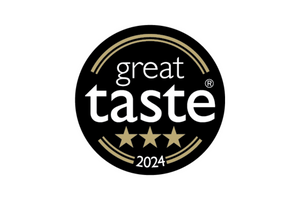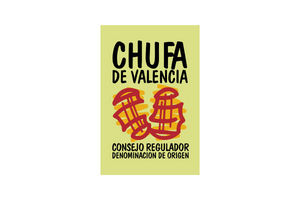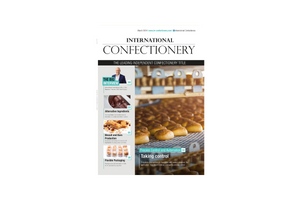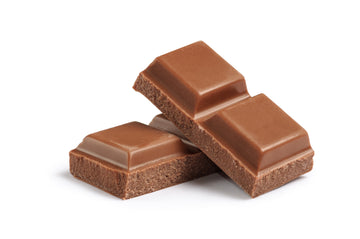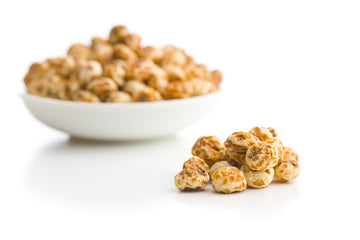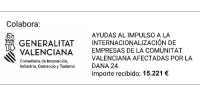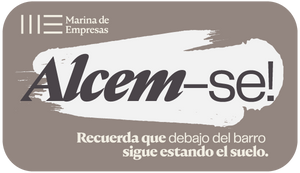Who invented milk chocolate?
Jun 04, 2025
Background
This article examines the invention of modern solid milk chocolate, identifying Daniel Peter, a Swiss chocolatier, as the pivotal figure who, in 1875, successfully created the first commercially viable product of its kind. His groundbreaking innovation was fundamentally enabled by Henri Nestlé's condensed milk, which provided the crucial solution to long-standing technical challenges. The development of milk chocolate was not a singular event but an evolutionary process, building upon earlier attempts and further refined by subsequent technological advancements, most notably Rodolphe Lindt's conching process. The advent of milk chocolate profoundly transformed the global confectionery industry, making chocolate more palatable and accessible to a broader audience, and firmly establishing Switzerland as a dominant force in chocolate production.
1. Introduction: The Quest for Sweetness and Smoothness
For centuries, chocolate was primarily consumed as a bitter beverage, often associated with medicinal properties. Its historical forms bore little resemblance to the smooth, sweet bars widely enjoyed today. The inherent bitterness of cocoa and the desire to improve its texture and palatability served as a persistent driving force for experimentation throughout the 18th and 19th centuries. This report aims to meticulously trace the invention of modern solid milk chocolate, examining its precursors, the breakthrough innovations, the technical challenges that were overcome, and its subsequent global popularization. The objective is to provide a nuanced understanding of this significant culinary milestone.
2. Early Forays: Precursors to Modern Milk Chocolate
The concept of combining milk with chocolate predates the solid form, initially appearing in beverages. The term "milk chocolate" itself first emerged in London in 1687, referring to a drink. An Irish physician named Hans Sloane is credited with introducing a milk-chocolate-like drink to London after observing its consumption in Jamaica. This beverage was initially marketed for its medicinal properties and gained considerable popularity across Europe, spreading to France and the USA by 1834. This early integration of milk with chocolate, albeit in liquid form, demonstrates a long-standing recognition of milk's potential to temper chocolate's bitterness and enhance its palatability, setting a precedent for future solid innovations.
Attempts to create a solid milk chocolate followed, but faced significant hurdles. In 1839, Eduard Jordan and Friedrich August Timaeus, pharmacists in Dresden, Germany, developed what they termed "dampfchocolade" (steam chocolate). This solid chocolate consisted of 60% cocoa, 30% sugar, and 10% donkey milk. However, this early version was not widely successful, primarily because consumers found it too bitter. More critically, early efforts to combine milk with cocoa butter were consistently "foiled by the substantial water content of milk which did not willingly mix with cocoa butter (a fat); efforts at combining the two produced chocolates that were an 'oily and milky mess'". This incompatibility also led to issues with poor shelf life and mildew. These failures highlight the profound technical hurdle posed by milk's water content when attempting to integrate it into a stable, palatable solid chocolate product. Consequently, major manufacturers of the time, such as Fry's and Lindt, continued to focus solely on dark chocolate.
The existence of Hans Sloane's milk-chocolate drink in the 17th century and Jordan & Timaeus's "dampfchocolade" in 1839, preceding Daniel Peter's 1875 breakthrough, clearly indicates that the idea of combining milk and chocolate was not novel. However, achieving success in a stable, solid form remained elusive due to fundamental technical barriers. This historical progression suggests that major inventions are rarely spontaneous occurrences but rather the culmination of incremental attempts, failures, and persistent problem-solving over extended periods. Peter's eventual success was not merely about conceiving the idea, but about discovering the precise solution to a long-standing and complex problem. The repeated emphasis on "high water content" and the resulting "oily and milky mess" as the primary challenge underscores a fundamental incompatibility between milk and cocoa butter. This specific technical barrier directly necessitated a solution that either removed or significantly reduced water from the milk component. This illustrates how the specific nature of a technical problem often dictates the direction of innovation, guiding inventors towards processes like condensing or powdering milk, rather than simply mixing fresh milk.
3. The Breakthrough: Daniel Peter and the Condensed Milk Revolution
The true breakthrough in solid milk chocolate came through the persistent efforts of Daniel Peter, a Swiss chocolatier from Vevey. Peter initially worked as a grocer and candle maker. When the introduction of gas lighting rendered his candle business obsolete, he pivoted his focus to chocolate production, a field he was connected to through his marriage into the pioneering Cailler chocolate-making family. His primary objective was to create a solid version of the popular chocolate milk beverage, one that could be easily transported and consumed. Peter dedicated eight long years to experimentation in pursuit of this goal. His persistence and familial ties to the chocolate industry uniquely positioned him to tackle this formidable challenge, driven by a growing market demand for convenience and new confectionery forms.
Peter's pivotal achievement occurred in 1875, when he successfully integrated milk into chocolate. The critical element in his success was the use of condensed milk. This innovative concept was inspired by his neighbour, Henri Nestlé, who had developed a process for producing condensed milk. While some early accounts mention Peter experimenting with "powdered milk" , the overwhelming and more detailed evidence consistently points to condensed milk, which Peter further dehydrated. This technical explanation for how condensed milk effectively solved the issues of high water content and spoilage strongly supports its role as the key ingredient. Fresh milk, with its high water content (approximately 87%), was incompatible with cocoa butter, leading to rancidity and spoilage in earlier attempts. Condensed milk, having a significantly reduced water content, provided the stable medium necessary for a solid chocolate product.
Peter's method involved drying his dark chocolate paste with Nestlé's sweetened condensed milk, a process that became known as the "milk chocolate crumb process". This technique further dehydrated the condensed milk, creating a stable form of milk chocolate that could be molded into bars, thereby overcoming the long-standing challenges of water content and spoilage. For more information on the Science, History and Future of the Milk Chocolate Crumb Process see our other article here.
The collaboration between Peter, a chocolatier, and Nestlé, an innovator in condensed milk, highlights how significant breakthroughs often arise not from isolated ingenuity but from the synergistic application of knowledge and technologies from different fields. Nestlé's condensed milk, originally developed for infant formula, found a transformative application in confectionery, illustrating the unexpected cross-industry impact of foundational innovations. Furthermore, while Peter created a "first version" of solid milk chocolate in 1875, his "final product," the "Gala Peter" bar, was not fully developed and launched until 1887. This 12-year gap, following Peter's eight years of prior experimentation, indicates a prolonged period of refinement. This demonstrates that true invention, particularly in industrial contexts, extends beyond the initial concept or prototype, encompassing an iterative process of optimization, scaling, and market acceptance. The invention of milk chocolate was thus a multi-stage journey from an initial concept to a commercially successful, refined product.
4. Refinement and Commercialization: The Swiss Legacy
While Daniel Peter's initial milk chocolate was a significant success, it was noted to have a somewhat "gritty" texture. A crucial complementary innovation arrived in 1879 with Rodolphe Lindt, another Swiss chocolate maker, who accidentally invented the conching machine. This process involved prolonged heating and rolling of liquid chocolate mass, followed by the addition of more cocoa butter. Conching dramatically refined the chocolate's texture, rendering it smooth, homogeneous, and truly "melt-in-the-mouth". This textural improvement was essential for the widespread appeal of milk chocolate, and Peter's "Gala Peter" product, launched in 1887, directly benefited from Lindt's conching process. Lindt's innovation was a distinct yet complementary breakthrough that elevated milk chocolate from a stable product to a truly luxurious and desirable confectionery, cementing its market position.
Daniel Peter officially launched his milk chocolate bar under the brand name "Gala Peter" in 1887, with "Gala" being the Greek word for milk. The bar was an immediate hit, successfully softening chocolate's natural bitterness. By 1911, Peter's milk chocolate recipe accounted for half of the world's chocolate consumption. This rapid market penetration underscores the immense demand for a milder, sweeter chocolate, which Peter's invention perfectly satisfied.
Peter's innovation spurred the rapid growth of the Swiss chocolate industry. Other Swiss manufacturers quickly adopted and further developed milk chocolate production, including Cailler (Peter's father-in-law's family company) and Kohler. Cailler, for instance, opened a large-scale production facility in Broc in 1898, with "Lait" becoming a popular brand. Carl Russ-Suchard launched the iconic Milka brand in 1901 , and Toblerone was invented in 1908 by Emil Baumann and Theodor Tobler. Switzerland rapidly became the global center of milk chocolate production, with an output reaching 15,000 tonnes by 1905. This surge in Swiss production subsequently sparked a dramatic increase in global cocoa consumption. The concentration of key innovators—Peter, Nestlé, and Lindt—and the subsequent rapid industrialization in Switzerland created a powerful cluster effect, making the country synonymous with high-quality chocolate.
The symbiotic relationship between product and process innovation is clearly demonstrated here: Peter's invention made milk chocolate possible by making it stable and palatable, but Lindt's conching made it desirable by making it smooth and melt-in-the-mouth. The combination of these two distinct innovations led to the product's overwhelming success. This illustrates that a truly transformative product often requires not just a single breakthrough in its core formulation, but also subsequent process innovations that enhance its quality, texture, and consumer experience. The "gritty" early version would likely not have achieved the same global dominance without Lindt's contribution. The rapid adoption and scaling of milk chocolate production by multiple Swiss companies after Peter's initial success points to a highly dynamic and interconnected industrial ecosystem. The presence of abundant cows and established chocolate-making expertise provided fertile ground. This suggests that geographical clusters of innovation, supported by local resources and existing industry knowledge, can lead to rapid industrial dominance, as exemplified by Switzerland's natural advantages and entrepreneurial spirit fostering an environment where chocolate innovation could flourish and scale globally.
5. Global Expansion and Mass Production
The immense success of Swiss milk chocolate quickly led to its adoption and production by companies in other countries. For instance, Cadbury in the United Kingdom introduced its own line of milk chocolate bars in 1897, culminating in the highly successful Dairy Milk bar in 1905. Cadbury also established facilities specifically for "chocolate crumb" production by 1911, indicating the formal adoption of Peter's method. This demonstrates the global diffusion of a successful innovation, often adapted and improved upon by local players.
In the United States, Milton Hershey, an American entrepreneur, became captivated by German chocolate-making machinery at the 1893 World's Columbian Exposition in Chicago. So impressed, he sold his successful caramel company for $1 million in 1900 to focus entirely on chocolate manufacturing. Hershey's unique breakthrough in milk chocolate came from his successful use of fresh milk, a departure from the condensed milk favored by Swiss chocolatiers. He had prior experience using fresh milk in his caramel production.
Hershey faced significant challenges with fresh milk's high water content (approximately 87%) and fat content, which caused rancidity. Through years of trial and error, and without a formal chemistry background, he devised effective solutions: he condensed skim milk in a closed kettle to prevent overheating and rancidity, and he discovered that adding sugar prior to condensing allowed for greater moisture removal, resulting in a thick, taffy-like mixture that blended well with chocolate. Hershey then began selling his milk chocolate bars to the American public for a mere 2 to 10 cents, effectively transforming milk chocolate from a luxury good into an affordable candy enjoyed by billions today.
The Swiss relied on condensed milk, likely due to Nestlé's presence and the established dairy industry. Hershey, despite being aware of Swiss methods, consciously pursued a fresh milk approach. This suggests a strategic choice, potentially influenced by his caramel-making experience and a vision for a distinct, mass-market product in the United States. This illustrates that innovation is not always about finding the single best solution, but often about finding the most appropriate solution given specific regional resources, existing industrial capabilities, and target market segments. Hershey's approach demonstrates how different technical pathways can lead to similar product outcomes, driven by unique contextual factors. Furthermore, Hershey's decision to sell his successful caramel company for a substantial sum to focus entirely on chocolate, and his subsequent efforts to make it inexpensive and widely accessible, represents a profound entrepreneurial vision beyond mere invention. The popularization and democratization of a product often depend as much on strategic business acumen and a commitment to mass production and affordability as it does on the initial technical invention. Hershey's story is a prime example of how industrial scale and pricing strategy can reshape consumer markets.
6. Technical Challenges and Innovations in Milk Chocolate Production
The journey to stable, palatable milk chocolate was fraught with significant scientific and engineering hurdles. The fundamental challenge lay in the inherent incompatibility of water and fat. Milk contains a high percentage of water (approximately 87%), while chocolate, particularly cocoa butter, is fat-based. Water and fat, by their nature, do not readily mix. Attempts to combine fresh milk with chocolate often resulted in an "oily and milky mess" , "weird curdly chocolate," or caused the chocolate to "seize" (where cocoa powder hydrates and clumps).11 Beyond textural issues, the presence of moisture also promoted mildew and led to rapid spoilage and rancidity.
These challenges necessitated ingenious solutions and process innovations:
-
Condensed Milk (Daniel Peter): Daniel Peter overcame the water content issue by utilizing condensed milk, which has significantly reduced water content. He further dehydrated this in what became known as the "milk chocolate crumb process". This process created a stable, moldable product. Peter's inspiration for this approach came from Henri Nestlé's condensed milk.
-
Conching (Rodolphe Lindt): Peter's initial milk chocolate, while stable, was somewhat gritty. Rodolphe Lindt's invention of conching, a prolonged mixing and aeration process, refined chocolate's texture. This process involves heating and rolling the liquid chocolate mass and incorporating additional cocoa butter. The impact was transformative, eliminating grittiness and resulting in a smooth, melt-in-the-mouth texture.
-
Fresh Milk Condensing (Milton Hershey): Milton Hershey developed a distinct method for mass production using fresh milk. He perfected a process for condensing fresh skim milk in a closed kettle, critically adding sugar prior to the condensing stage. This allowed for efficient moisture removal and created a stable, blendable mixture. This approach differed from Peter's, being specifically tailored for mass production and leveraging the readily available fresh milk resources in the United States.
Other considerations in milk and chocolate interaction, though sometimes more pertinent to liquid forms, highlight broader challenges. In chocolate milk, for instance, cocoa particles do not dissolve but remain suspended, leading to sedimentation over time due to gravity. Solutions include increasing viscosity with thickeners or using finer particles. Furthermore, some milk powders, produced through evaporation, can develop a "cooked milk taste". Full-fat or freeze-dried milk powders might offer alternatives. The presence of butyric acid in some milk chocolates can also contribute to a "cheesy taste". These technical details underscore the complex interplay of chemistry, physics, and engineering required to transform disparate ingredients into a harmonious, stable, and palatable product. The solutions were not simple additions but involved sophisticated processing techniques.
The specific technical challenges, such as water content, fat separation, rancidity, and seizing, and the direct responses in the form of condensed milk, conching, and specific fresh milk condensing methods, reveal that seemingly simple culinary innovations often rest upon a deep, albeit often implicit, understanding of material science and food chemistry. The success of milk chocolate was not merely about mixing ingredients, but about mastering the complex interactions between them at a molecular level to ensure stability, texture, and flavor. The progression from early "oily and milky mess" to Peter's stable crumb, then Lindt's smooth texture, and finally Hershey's mass-produced fresh milk version, demonstrates a continuous cycle of identifying problems and developing increasingly sophisticated industrial processes to overcome them. This illustrates a historical trend in food manufacturing where initial breakthroughs are followed by iterative improvements in process engineering, driven by both quality enhancement and scalability. The challenges were not just solved, but the methods of solving them also evolved.
Table 2: Technical Challenges and Solutions in Milk Chocolate Production
|
Challenge |
Consequences |
Solution |
Mechanism/Process |
Impact |
|
High Water Content / Incompatibility with Cocoa Butter |
Oily/milky mess, seizing (clumping), spoilage, rancidity, poor shelf life. |
Condensed Milk (Daniel Peter, Henri Nestlé) |
Reduced water content of milk; further dehydration in the "crumb process." |
Achieved stability and moldability into solid bars. |
|
Gritty Texture / Lack of Smoothness |
Unpleasant mouthfeel. |
Conching (Rodolphe Lindt) |
Prolonged mixing and aeration of chocolate mass; heating and addition of cocoa butter. |
Resulted in a smooth, homogeneous, "melt-in-the-mouth" texture. |
|
Mass Production with Fresh Milk / Rancidity |
Rancid taste, difficulty in scaling for affordability. |
Fresh Milk Condensing (Milton Hershey) |
Condensing skim milk in a closed kettle; adding sugar before condensing for efficient moisture removal; created a stable, blendable mixture. |
Enabled affordable, mass-producible milk chocolate using fresh milk. |
Table 1: Key Milestones in Milk Chocolate Development (Chronological)
|
Year |
Event/Innovation |
Key Figure/Company |
Significance |
|
1687 |
First appearance of "milk chocolate" term (drink) / Hans Sloane's milk-chocolate drink. |
Hans Sloane |
Earliest known combination of milk and chocolate, albeit liquid, for medicinal purposes. |
|
1839 |
First solid milk chocolate attempt ("dampfchocolade"). |
Eduard Jordan & Friedrich August Timaeus |
Early, unsuccessful attempt due to bitterness and water content issues. |
|
1867 |
Daniel Peter establishes his chocolate company. |
Daniel Peter |
Foundation for Peter's later milk chocolate invention. |
|
1875 |
Daniel Peter invents the first successful solid milk chocolate. |
Daniel Peter (with Henri Nestlé's condensed milk) |
Solved water content issue using condensed milk; breakthrough for stable milk chocolate. 1 |
|
1879 |
Invention of the conching machine. |
Rodolphe Lindt |
Dramatically improved chocolate texture, making it smooth and melt-in-the-mouth. Essential for milk chocolate's appeal. |
|
1887 |
"Gala Peter" milk chocolate bar launched. |
Daniel Peter |
First commercially successful eating milk chocolate brand, benefiting from conching. |
|
1898 |
Cailler opens large-scale milk chocolate factory. |
Cailler |
Expansion of large-scale milk chocolate production in Switzerland. |
|
1901 |
Milka brand chocolate launched. |
Carl Russ-Suchard |
Another iconic Swiss milk chocolate brand. |
|
Early 1900s (e.g., 1900-1907) |
Milton Hershey perfects mass production of milk chocolate using fresh milk. |
Milton Hershey |
Made milk chocolate affordable and accessible to the American public. |
|
1905 |
Cadbury Dairy Milk launched (UK) / Switzerland produces 15,000 tonnes of chocolate. |
Cadbury / Swiss Chocolate Industry |
Global spread of milk chocolate; Swiss dominance in production. |
|
1908 |
Toblerone invented. |
Emil Baumann & Theodor Tobler |
Unique and iconic milk chocolate product. |
7. Conclusion: A Sweet Legacy
Daniel Peter is definitively credited as the inventor of the first commercially successful solid milk chocolate in 1875. His innovation was a direct response to the long-standing challenge of integrating milk into chocolate in a stable, palatable form. The journey of milk chocolate's development was a testament to collaborative innovation, heavily relying on Henri Nestlé's prior invention of condensed milk. Its refinement was further propelled by Rodolphe Lindt's conching process, which perfected its texture. Subsequent innovations, such as Milton Hershey's fresh milk process, expanded its reach and affordability, particularly in the American market.
The concentration of key innovations—condensed milk, milk chocolate, and conching—and the rapid industrial scaling within a relatively small geographical area like Switzerland is remarkable. This was not merely a collection of individual brilliant minds but a thriving ecosystem of interconnected inventors, entrepreneurs, and established industries. The story of milk chocolate thus serves as an excellent historical case study for understanding how innovation ecosystems, characterized by proximity, shared knowledge, and complementary technologies, can accelerate development and establish regional dominance in specific industries.
Ultimately, milk chocolate transformed chocolate from a bitter beverage or a luxury dark confectionery into a widely accessible and beloved treat, fundamentally altering global consumption patterns. It solidified Switzerland's reputation as a global leader in chocolate production. Peter's invention led to a dramatic increase in global cocoa consumption, fostered the rise of major brands, and facilitated the transformation of chocolate from a luxury good to an everyday candy. This demonstrates that a single, well-executed technical innovation can have profound and far-reaching economic and cultural consequences, reshaping entire industries, supply chains, and consumer habits over decades. The invention of milk chocolate is a prime example of how a seemingly simple product change can drive global market expansion and cultural integration, leaving a sweet and enduring legacy.
Works cited
-
Who Invented Milk Chocolate?, accessed June 4, 2025, https://www.whitakerschocolates.com/blogs/blog/who-invented-milk-chocolate
-
Milk chocolate - Wikipedia, accessed June 4, 2025, https://en.wikipedia.org/wiki/Milk_chocolate
-
The Illustrated History of Milk Chocolate - History Oasis, accessed June 4, 2025, https://www.historyoasis.com/post/history-milk-chocolate
-
The Science, History and Future of Milk Chocolate Crumb - Tiger & Bean, accessed June 4, 2025, https://www.tigerandbean.com/blogs/news/the-secret-ingredient-unveiling-the-science-and-future-of-milk-chocolate-crumb
-
Peter's Chocolate - Wikipedia, accessed June 4, 2025, https://en.wikipedia.org/wiki/Peter%27s_Chocolate
-
Sweet Success: Daniel Peter and Milk Chocolate - Hidden Genius - YouTube, accessed June 4, 2025, https://www.youtube.com/watch?v=fcvBax9GqgM
-
Switzerland: the land of milk chocolate - Carré Suisse, accessed June 4, 2025, https://carre-suisse.com/en/blogs/infos/la-suisse-pays-inventeur-du-chocolat-au-lait
-
carre-suisse.com, accessed June 4, 2025, https://carre-suisse.com/en/blogs/infos/la-suisse-pays-inventeur-du-chocolat-au-lait#:~:text=Daniel%20Peter%3A%20the%20inventor%20of%20milk%20chocolate&text=In%201875%2C%20in%20Vevey%2C%20in,to%20make%20it%20less%20bitter.
-
Solid chocolate - Alimentarium, accessed June 4, 2025, https://www.alimentarium.org/en/fact-sheet/solid-chocolate
-
Origins of Hershey's Milk Chocolate - Hershey Community Archives, accessed June 4, 2025, https://hersheyarchives.org/encyclopedia/origins-of-hersheys-milk-chocolate/
-
Can you make milk chocolate bars with fresh milk or cream? - Seasoned Advice, accessed June 4, 2025, https://cooking.stackexchange.com/questions/111103/can-you-make-milk-chocolate-bars-with-fresh-milk-or-cream
-
The Science of Chocolate Milk (And How to Prevent Sedimentation) - FoodCrumbles, accessed June 4, 2025, https://foodcrumbles.com/chocolate-milk-sedimentation/


